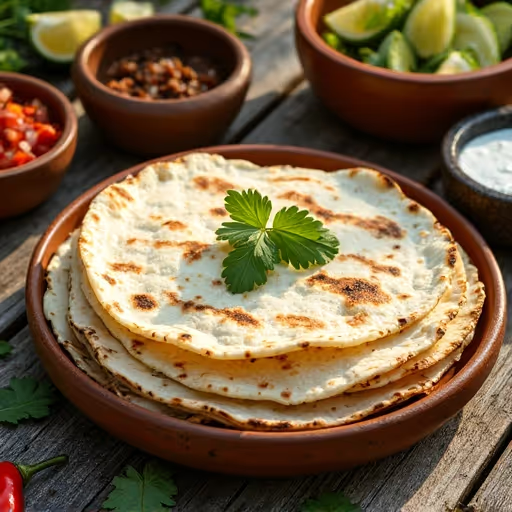Grillwisehub FAQ for:
Grilled BBQ Barramundi with Citrus Butter
What's the best technique for getting perfectly crispy skin on my barramundi without overcooking the fish?
For perfectly crispy barramundi skin, ensure your BBQ is properly preheated to medium-high heat (190-204°C / 375-400°F) before placing the fish on the grill. Pat the fillets completely dry with paper towels first—moisture is the enemy of crispy skin. Start cooking skin-side down and resist the urge to move the fish for the full 4-5 minutes to allow the skin to crisp up properly. Use a fish spatula or wide turner to carefully flip the fillets once to avoid tearing the delicate skin. The fish is done when it reaches an internal temperature of 63°C / 145°F and flakes easily with a fork. Remember that barramundi continues cooking slightly after removal from heat, so it's better to remove it just before it's fully cooked rather than risk overcooking.
Can I substitute barramundi with another fish for this recipe, and how would that affect the nutrition?
Yes, you can substitute barramundi with other firm white fish like snapper, cod, or sea bass while maintaining similar cooking techniques. Nutritionally, these substitutions vary slightly: snapper provides similar protein (24g per 200g fillet) but slightly less fat (2.5g vs 5g per 200g); cod offers comparable protein (22g per 200g) with even lower fat content (1g per 200g), making it a good option for extremely low-fat diets. For those avoiding fish entirely, firm tofu (about 300g to replace 200g fish) can be used with similar cooking times, though you'll get less protein (21g vs 24g) and approximately the same calories in the traditional version. For keto dieters, salmon makes an excellent substitution with higher healthy fat content (13g vs 5g per 200g) and similar protein, though this increases calories to approximately 370 for the traditional version. Always ensure any substitute is cooked to the proper internal temperature of 63°C / 145°F.
What are some delicious side dishes to serve with this grilled barramundi?
This citrus butter barramundi pairs beautifully with several complementary sides. For a light, refreshing option, try a cucumber and cherry tomato salad with fresh mint and a lemon-olive oil dressing. Grilled asparagus makes an excellent companion—simply brush with a little avocado oil and grill for 3-4 minutes while the fish rests. For a more substantial meal, serve with herbed quinoa (225g cooked provides 8g protein and 39g carbs) or cauliflower rice for a low-carb alternative (100g provides only 5g carbs). Roasted sweet potatoes with a sprinkle of smoked paprika offer a colourful, nutrient-dense option with approximately 21g carbs per 100g serving. For a restaurant-quality presentation, serve the fish atop a bed of wilted spinach with roasted cherry tomatoes and a wedge of lemon. A side of steamed green beans with toasted almonds adds crunch and additional nutritional value. All these sides maintain the clean-eating profile of the dish while enhancing its flavours and providing balanced nutrition.
What are the nutritional benefits of this recipe for a fitness-focused diet?
This barramundi recipe offers excellent nutritional benefits for fitness enthusiasts. The traditional version provides a 52% protein, 47% fat macro ratio with minimal carbs (1%), making it ideal for keto and low-carb diet followers. At 295 calories per serving with 24g of protein, it's perfect for muscle recovery and growth. The low-calorie version dramatically improves the protein-to-calorie ratio (25g protein for just 185 calories) with a 54% protein, 44% fat, 2% carb distribution, offering a 37% calorie reduction primarily from fat, making it excellent for cutting phases whilst maintaining protein intake. Barramundi itself is a nutrition powerhouse, containing omega-3 fatty acids (approximately 840mg per serving) which support recovery and reduce exercise-induced inflammation. It's also rich in vitamin D (approximately 4mcg per serving), essential for calcium absorption and muscle function. The citrus components provide vitamin C (about 30mg per serving), supporting immune function during intensive training periods. Both versions are gluten-free and dairy-free (in the low-cal version when using plant-based butter spread), supporting various dietary approaches.
How should I store and reheat leftover barramundi to maintain its texture and flavour?
For proper storage of leftover barramundi, refrigerate within 2 hours of cooking in an airtight container for up to 3 days maximum. Store the citrus butter separately from the fish when possible to prevent the fish from becoming soggy. To reheat, never bring the cold fish to room temperature first—this creates a food safety risk. Instead, reheat directly from the refrigerator using one of these methods: For best texture preservation, place the cold fish in a 120°C / 250°F oven covered with foil for 10-12 minutes until it reaches 63°C / 145°F internally. Alternatively, for gentle reheating that preserves moisture, use a steamer basket over simmering water for 5-7 minutes until the fish reaches safe temperature. For premium results, consider sous vide reheating at 60°C / 140°F for 15 minutes if you have the equipment. The citrus butter can be gently rewarmed separately in a small saucepan over low heat and drizzled over the reheated fish. Freezing cooked barramundi is not recommended as it significantly degrades texture upon thawing.






